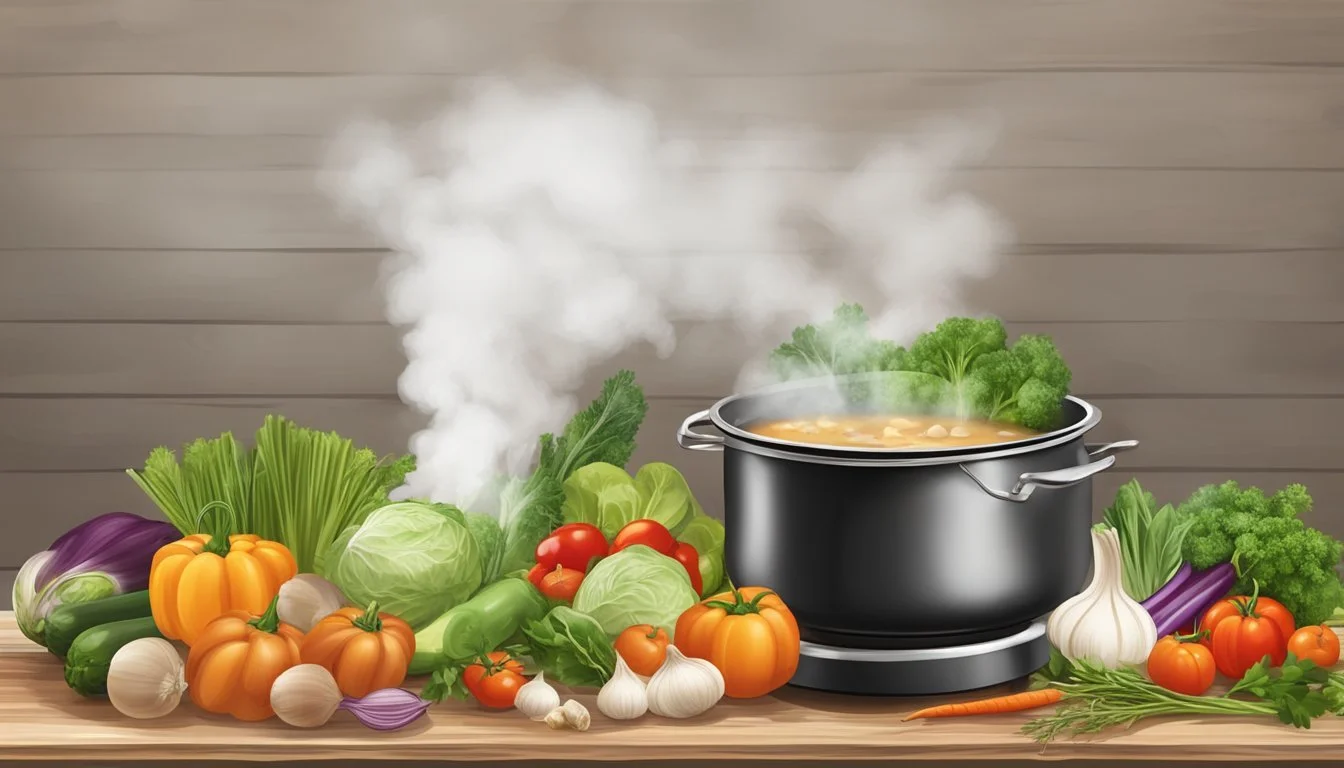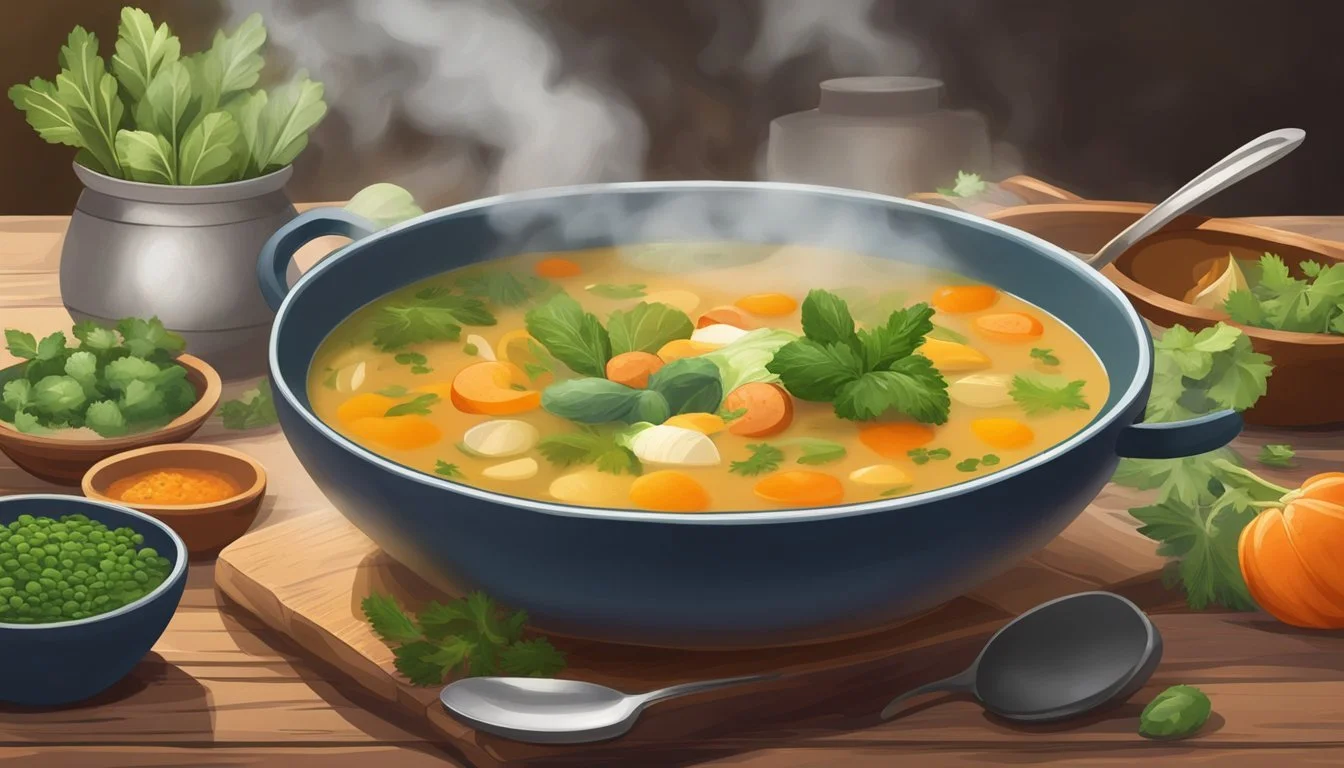The Best Paleo Diet Soups for Cold Weather
Nutritious and Comforting Recipes
The Paleo diet emphasizes whole foods, quality proteins, and healthy fats, while steering clear of grains, legumes, and processed sugars. This focus on nutrient-dense ingredients makes it an appealing choice for many looking to improve their health and wellness. As colder weather sets in, the body naturally craves warmth and comfort, making soups (What wine goes well with soups?) an ideal dietary staple. Paleo soups, rich in vitamins and minerals from an abundance of vegetables and hearty proteins, provide both nourishment and warmth during the chillier months.
A variety of Paleo soup recipes cater to these wholesome needs without compromising on taste. Consider the rustic flavors of a Zuppa Toscana with its blend of spicy sausage and creamy broth, or the simplicity of a slow cooker pumpkin soup that transforms few ingredients into a velvety-smooth delight. For those who enjoy a bit of heat, a beanless chili recipe can offer a satisfying kick, while also adhering to Paleo principles by omitting legumes.
Seasonal vegetables like sweet potatoes and pumpkins not only enhance the flavor profile of these soups but also contribute to the body's nutritional needs with their high fiber content and antioxidants. Pairing these ingredients with quality meats or poultry, and garnishing with fresh herbs, can elevate a simple bowl of soup to a well-rounded and comforting meal, perfect for the colder months.
Benefits of Paleo Diet Soups
Paleo diet soups offer an array of benefits for individuals seeking both health and comfort during colder months. They are inherently nourishing, as they focus on whole foods and exclude processed ingredients that are often found in conventional soups.
Nutrient Density: Paleo soups are made with a base of lean meats, fresh vegetables, and natural broths. These ingredients provide an excellent source of vitamins, minerals, and essential nutrients without the additives or preservatives found in many canned soups.
Lean Proteins: Meat, poultry, or fish offer essential amino acids.
Vegetables: A variety of colors supply phytonutrients and fiber.
Broths: Homemade or preservative-free broths support hydration and electrolyte balance.
Dietary Compliance: For those committed to a paleo diet, paleo soups are an excellent choice. They adhere strictly to the diet's principles, using ingredients like grass-fed beef, organic vegetables, and healthy fats like olive oil or coconut milk.
Grain-Free: No grains means no gluten or other potential irritants.
Dairy-Free: Soups use alternatives like almond milk for creaminess.
Legume-Free: Focus is on vegetables and meats, not beans or lentils.
Comforting Qualities: The warmth and simplicity of a hearty bowl of paleo soup can be deeply comforting. The focus on rich, natural flavors satisfies the palate and can bring about a sense of well-being.
Rich Flavors: Herbs, spices, and slow cooking develop deep tastes.
Satiety: High protein and fiber content can lead to feelings of fullness.
Digestive Health: Many people find that the digestive-friendly aspects of paleo ingredients contribute to improved gut health, as they are typically easier to digest than grains and processed foods.
Fiber-Rich Vegetables: Aid in digestion and regularity.
Bone Broth Base: Can be soothing for the digestive system.
In summary, paleo soups are a healthful, comforting, and satisfying option for those seeking the benefits of the paleo diet, especially when the weather turns cold. Their rich flavors and nutrient-dense compositions make them a smart choice for maintaining well-being during the winter season.
Essential Ingredients for Paleo Soups
Creating nourishing and delicious Paleo soups relies on a selection of protein sources, fresh vegetables, healthy fats, and a rich palette of herbs and spices. These components provide not only the necessary nutrients and flavors but also adhere to the Paleo dietary guidelines.
Choosing the Right Proteins
Proteins are the cornerstone of any Paleo soup, providing essential amino acids and sustenance. Common choices include:
Chicken: Offers versatility; use chicken breast for a lean option.
Beef: Ground beef or chunks are excellent for a hearty stew.
Fish and Seafood: Such as shrimp, bring a lighter, yet protein-rich dimension.
Italian Sausage: Can add a spicy kick to soups.
Bacon: A small amount renders a smoky flavor.
Selecting Vegetables
Vegetables are crucial for vitamins, minerals, and fiber. When choosing vegetables for Paleo soups, opt for:
Leafy Greens: Kale and spinach are nutrient-dense.
Root Vegetables: Sweet potatoes and carrots add sweetness and thickness.
Cruciferous Vegetables: Cauliflower and cabbage provide bulk and are excellent for simulating grains or legumes.
Nightshades: Tomatoes and bell peppers are flavorful and rich in antioxidants.
Squashes: Butternut and zucchini are hearty and comforting.
Healthy Fats and Dairy Alternatives
Healthy fats give Paleo soups a satisfying richness. Include:
Coconut Milk/Cream: Creamy texture without dairy; it's ideal for Thai-inspired soups.
Olive Oil: Use it as a base for sautéing aromatics like onions and garlic.
Herbs and Spices for Flavor
Depth of flavor in Paleo soups comes from wisely chosen herbs and spices:
Fresh Herbs: Basil, thyme, and parsley enhance freshness.
Dry Spices: Cumin, chili powder, and paprika add complexity and heat.
Aromatics: Garlic and ginger offer potent flavors that can define a soup's character.
By selecting the right combination of these ingredients, one can craft a variety of Paleo-friendly soups perfect for cold weather.
Classic Paleo Soup Recipes
When the temperature drops, nothing satisfies like a bowl of warm soup. These paleo-friendly recipes preserve the hearty and fulfilling nature of classic soups while adhering to the paleo diet principles, focusing on high-quality meats, rich stocks, and an abundance of fresh vegetables.
Hearty Meat and Vegetable Stews
Meat and vegetable stews are the cornerstone of paleo winter warmth. Italian Wedding Soup, traditionally made with meatballs and greens in a clear broth, easily adapts to paleo guidelines by using ground beef and chicken stock as a base, and substituting grains with more vegetables. The result is a protein-packed, nutrient-dense stew.
Another paleo favorite is the slow cooker bison (What wine goes well with bison?) stew, which utilizes beef stock and a variety of root vegetables. This stew offers the rich flavors and tender textures that come from hours of slow cooking, making it not only delicious but also extremely convenient for busy individuals.
Creamy Paleo Soups
Paleo creamy soups achieve their velvety texture through the use of coconut milk and coconut cream instead of dairy. A Creamy Cauliflower Soup, for instance, blends these coconut products with chicken broth and garlic, producing a smooth and satisfying bowl without any dairy.
The Cream of Mushroom Soup pairs mushrooms with a seasoned blend of stock and coconut cream to create a classic comfort dish. This section would not be complete without mentioning Zuppa Toscana, a creamy Italian soup that can be made paleo by using coconut milk as a cream base, together with nutrient-dense kale and homemade sausage.
Exotic and International Soups
For those who crave bolder flavors, paleo soups take inspiration from international cuisines. Thai Shrimp Soup offers a combination of seafood and exotic flavors thanks to ingredients like lemongrass and lime, complemented by coconut milk for creaminess.
An Enchilada Soup brings the taste of Mexico to the paleo table using rich spices and herbs, with chicken and vegetables for a complete meal in a bowl. Not forgetting Pizza Soup, which incorporates all the beloved pizza toppings (What wine goes well with pizza toppings?) like tomatoes, peppers, and mushrooms into a hearty, soup form.
Cooking Techniques and Equipment
When it comes to preparing Paleo diet soups for cold weather, two popular methods are using a slow cooker and leveraging the speed of an Instant Pot or traditional stovetop. These appliances offer convenient ways to extract flavors and achieve the desired soup consistency.
Slow Cooker Soups
A slow cooker, or crockpot, is an excellent tool for making hearty Paleo soups. It allows ingredients to simmer and meld over several hours, often resulting in deeper flavor development. One popular option is a slow cooker taco soup, which typically combines a protein such as chicken or beef, with a variety of vegetables and spices, letting them stew together throughout the day. To use a slow cooker:
Layer hardy vegetables and protein at the bottom.
Add liquid, such as a Paleo-friendly broth.
Set the slow cooker to low for 6-8 hours or high for 3-4 hours.
Instant Pot & Stovetop Methods
For those who prefer a quicker process, the Instant Pot presents a multipurpose solution. It can significantly reduce cooking time while still producing complex flavors. The stovetop remains a traditional and controlled approach for making Paleo soups and allows for more active engagement during the cooking process. An immersion blender can be an excellent tool for both methods when one desires a smoother soup texture. When using an Instant Pot or stovetop:
Begin by sautéing aromatics such as onions and garlic to build the flavor base.
Add the main ingredients and cover with stock or water.
For the Instant Pot, set it to the soup setting. On the stovetop, bring to a boil and then let it simmer until the ingredients are tender.
Use an immersion blender if a creamy texture is desired, right in the pot for convenience.
Specialized Paleo Soup Variations
For those strictly adhering to a Paleo diet, variations of soups are available to cater to diverse dietary needs such as Whole30, keto, or simply for those seeking healthy options for lunch or dinner during the chilly soup season.
Whole30 Compliant Soups
Whole30 compliant soups forego grains, sugars, dairy, and legumes to promote total wellness. These soups often feature a rich base of homemade bone broth or vegetable stock and are packed with a variety of vegetables and protein.
Chicken Pot Pie Soup: Simmers chicken with vegetables like carrots and celery, thickened with a bit of arrowroot powder to keep it grain-free.
Bacon Cheeseburger Soup: Boasts ground beef, bacon, and a dairy-free cheese flavor achieved using nutritional yeast and coconut milk.
Keto-Friendly Choices
Keto-friendly soups focus on high-fat, low-carb ingredients to align with the ketogenic diet principles. They creatively substitute starchy components with keto-compatible alternatives.
Pizza Soup: Offers a tomato-based broth brimming with Italian seasoning, ground meat, and mushrooms, topped with dairy or non-dairy cheese.
Zuppa Toscana: A savory combination of sausage, kale, and a creamy base, using cauliflower to mimic potatoes' texture.
Soups for Any Meal
Soups suitable for any meal are versatile, focusing on nutrient-dense ingredients without sacrificing flavor. They are ideal for dinner or lunch, offering comfort and sustenance.
Cabbage Beef Soup: This hearty soup blends the richness of beef with the health benefits of cabbage, along with a variety of other vegetables.
Pumpkin Soup: Slow-cooked for maximum flavor, this soup combines pumpkin with a low-carb base, perfect for a cozy dinner.
Paleo Diet Adaptations
The Paleo diet typically emphasizes whole foods, lean proteins, vegetables, fruits, nuts, and seeds, while excluding grains, dairy, and processed foods. However, it can be adapted to accommodate individual dietary needs and preferences, including vegetarianism and specific food intolerances.
Vegetarian and Vegan Options
Adapting Paleo soups for vegetarians involves focusing on plant-based protein sources and a variety of vegetables. Soups can be enriched with ingredients such as:
Proteins: nuts, seeds, and seed butters; spirulina; and nutritional yeast.
Vegetables: leafy greens, root vegetables, and cruciferous vegetables like broccoli and cauliflower.
Fats: avocados, olive oil, and coconut milk for creaminess.
Popular Paleo-friendly, plant-based soup ingredients are:
Vegetables Proteins Healthy Fats
Kale Chia seeds Avocado
Butternut squash Hemp seeds Olive oil
Brussels sprouts Almond butter Coconut milk
Adapting Soups to Dietary Restrictions
Paleo soups can easily be made dairy-free by substituting dairy with alternatives like coconut milk or almond milk to achieve creaminess. For those who are AIP (Autoimmune Protocol) or have nightshade sensitivities, they should avoid typical Paleo ingredients like tomatoes and peppers, opting instead for:
AIP/Nightshade-free veggies: mushrooms, onions, carrots, and zucchini.
Herbs and spices: ginger, garlic, and herbs like thyme and rosemary to add depth of flavor.
By swapping in these ingredients, individuals with these specific dietary restrictions can still enjoy the full flavor and nutritional benefits of Paleo soups.






